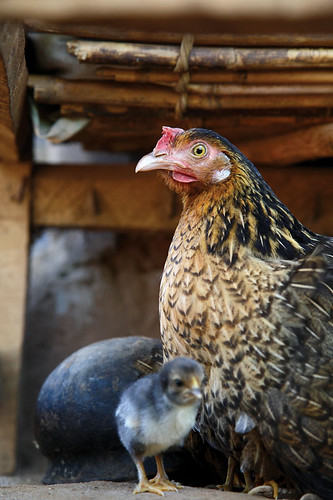Risk assessment shows Avian Influenza still a threat to poultry production in Kenya
The risk of avian flu on poultry production continues to be a threat to the livelihoods of many poor and livestock-reliant farmers in developing countries such as Kenya, researchers say.
Scientists from the International Livestock Research Institute (ILRI) and the International Food Policy Research Institute (IFPRI) have found that poultry farmers in Kenya are ‘highly susceptible to the introduction and spread of the highly pathogenic avian influenza (HPAI)’ because of the country’s location along key wild birds’ migratory routes and the absence of strong mechanisms to deal with a possible outbreak of the disease.
Like in many developing countries, poultry production is an important livelihood activity in Kenya. Most poultry is kept by small-scale farmers in non-commercial settings, who depend on income from the sale of eggs, animals and meat to sustain their livelihoods.
Results from a 2009 impact assessment conducted by ILRI, IFPRI and the Royal Veterinary College in London with support from the Department for International Development (DFID) on the ‘Role of Poultry in Kenyan Livelihoods and the Ex Ante Impact Assessment of HPAI on Livelihood outcomes’ show that farmers in the key poultry producing regions of the country are not adequately prepared to deal with an outbreak of avian influenza.
Though the country has not had an outbreak of avian flu, there were two scares in 2005 and 2005. The scares led to a slowdown in the industry as farmers, in fear of making losses, reduced flock sizes by up to 40 per cent. The two scares also led to a depressed market for poultry and poultry products and lowered the prices which negatively impacted farmers. The assessment showed that farmers in Kenya are still at risk especially because the country’s human and animal health services are not adequate. Coupled with the fact that most of the poultry farming in the country is a ‘backyard poultry system’ preventing and controlling disease outbreaks would be significantly difficult.
Among others, the results of the assessment also showed, like other studies had confirmed, that poultry production is largely done by women and children to support livelihoods and that most of the poultry in Kenya is produced in the country’s western and eastern regions. Farmers in these places are most at risk of loses in the event of a HPAI outbreak. Kenyan farmers keep an average flock size of 18 birds across the country but there are significant variations across regions mostly determined by ease of access to markets. Nairobi province, for example, has large producers (though fewer in number compared to other regions) with an average of 158 birds per flock because of access to ready market for their animals.
The assessment found that ‘households with “larger” small-scale flocks as well as those located in high risk areas (Western, Nyanza and parts of Eastern provinces) are vulnerable to HPAI. In the event of an outbreak, the disease would cause ‘significant reduction in livestock income and wealth (asset value) and total annual household income would be reduced.’
The results of this assessment were first published as ‘The role of poultry in Kenyan livelihoods and the ex ante impact assessment of HPAI on Livelihood outcomes’ by the International Food Policy Research Institute (IFPRI). A full report of the assessment can be found in the following link http://www.ifpri.org/sites/default/files/publications/hpairb11.pdf
For more information visit www.hpai-research.net


We Sell Poultry Eggs Incubators In Kenya,the incubators can be used all types of Birds’ eggs e,g Chicken,Turkey,Goose e.t.c.
For more details call BESTHATCH INCUBATORS on 0724702512